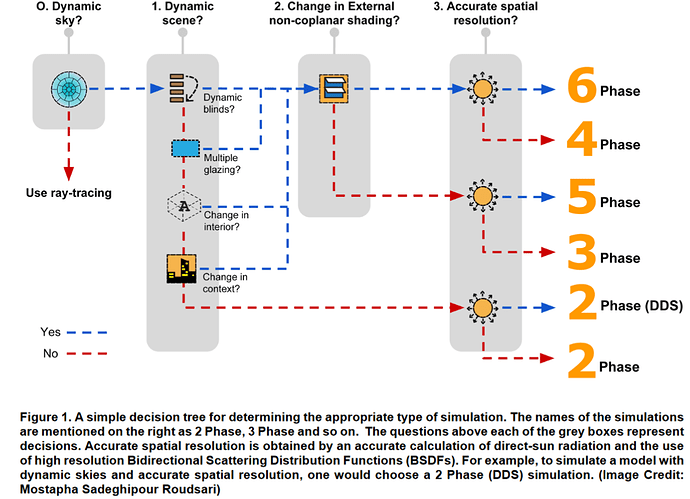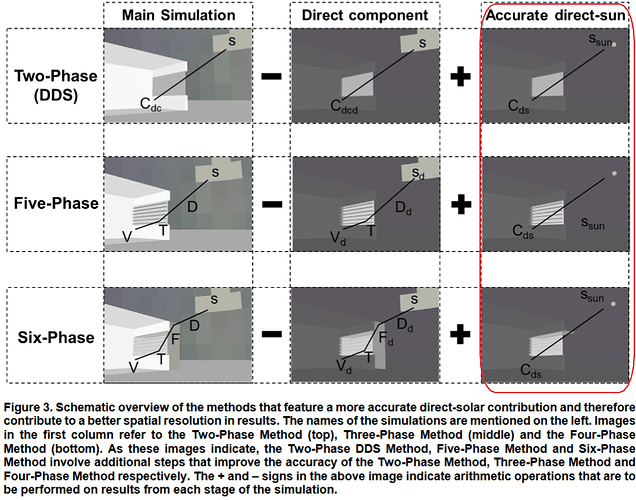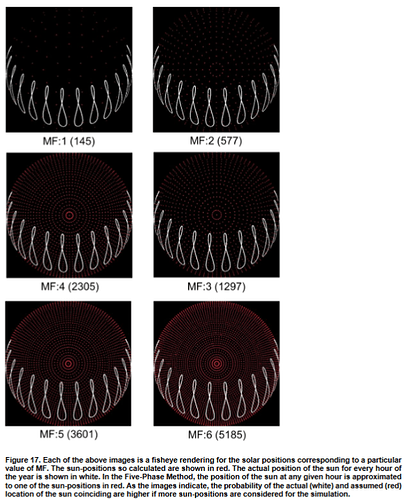This image, which Mostapha had created after a lot of back and forth between me and LBNL, is decent decision tree for determining what sort of simulation might be appropriate:
The underlying method for calculating ASE remains the same irrespective of which “phase” method you use. See the red rectangle below.
Finally, HB[+] isn’t technically using the DDS method. Both Daysim (~ 64 suns) and Daysim DDS versions (2305 suns) approximate the position of sun. In HB[+] we are not approximating and use the actual position of the sun instead. Refer the caption for the figure below. HB[+] uses the white positions corresponding to the actual positions, while Daysim DDS uses the red positions corresponding to 2305 positions (with approximation). Additionally, as far as I am aware there is no GUI-based way of doing DDS simulations. One has to setup DDS simulation through a text-based editor irrespective of which GUI-front end one is using.
As per LM 83-12, the occupancy times are based on 10 hours per day (=3650 hours). In a place like Phoenix, AZ a lot of those hours will have clear skies and we’d end up with a calculation involving almost 3650 suns. However in a place like Seattle, WA which has a fair share of overcast weather, we’d end up with less suns in the calculation. Whether an hour is overcast or sunny is based on the Perez Sky Model. For the hours when the sun is above the horizon, the hour would be assigned as overcast is based on the magnitude of Direct-Normal radiation (which is available from EPW files).


